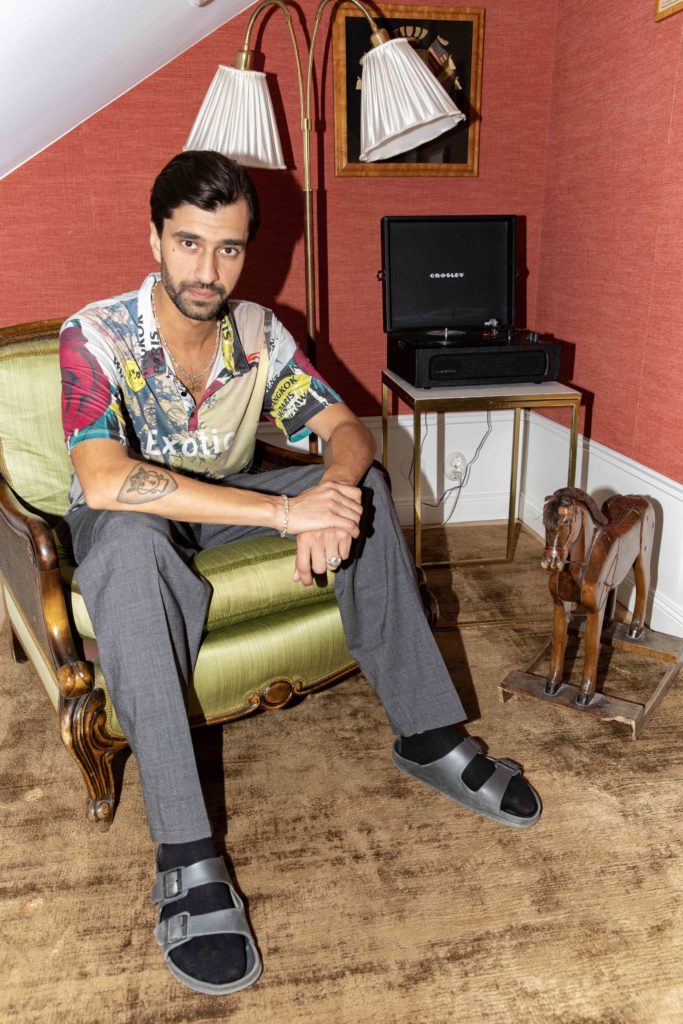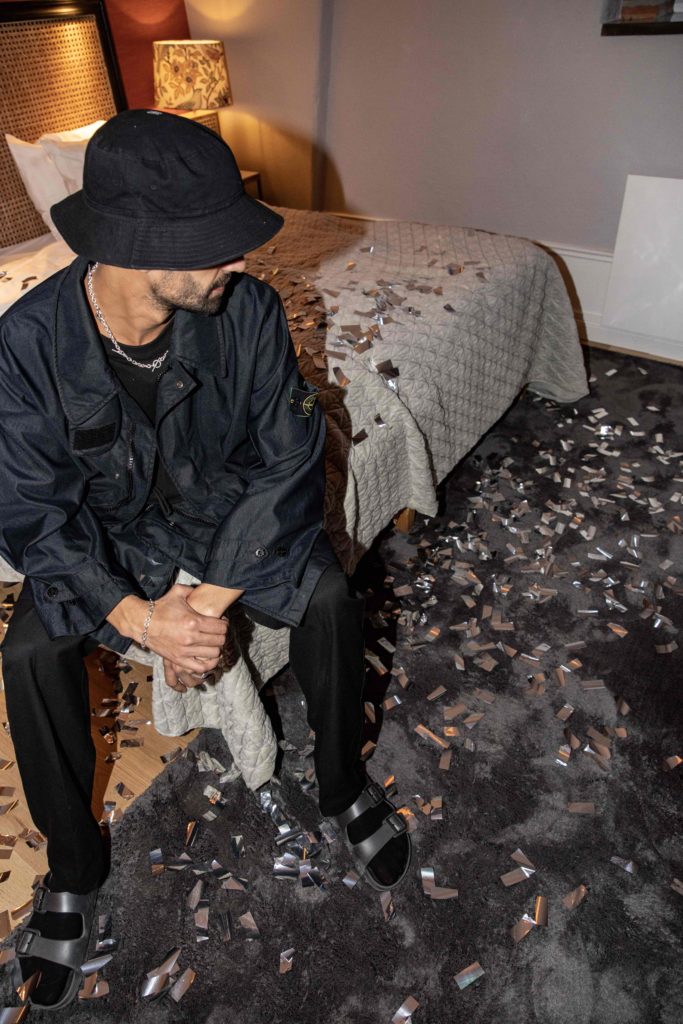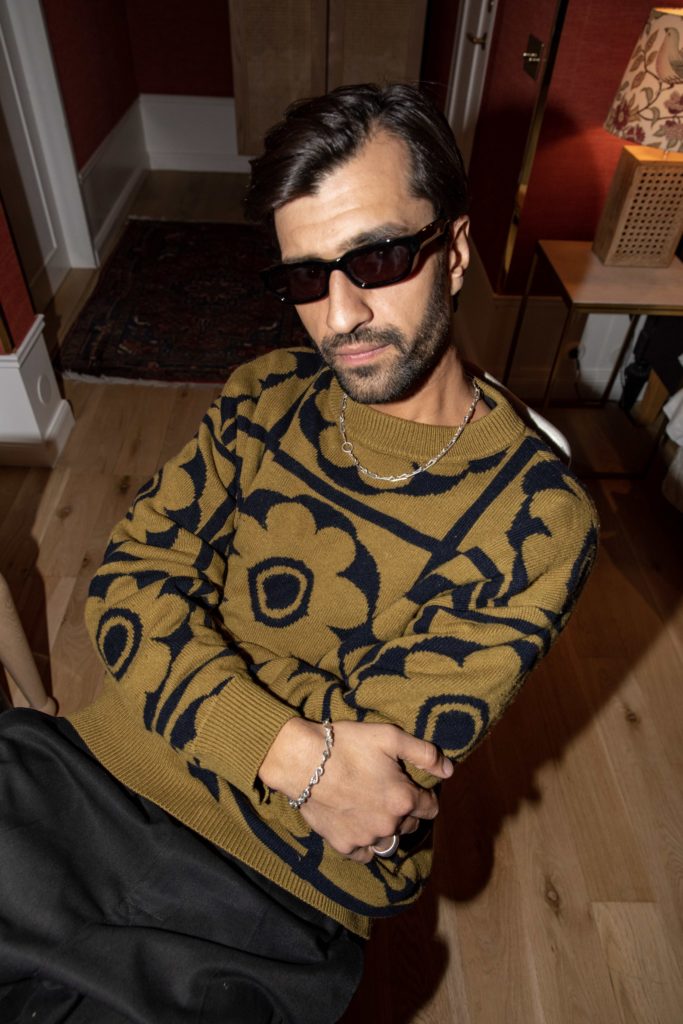Il producer svedese dallo spirito cosmopolita si racconta in un’intervista esclusiva in concomitanza all’uscita del suo nuovo EP su Watergate Records.
Più di 10 anni di presenza sulla scena, eventi in tutto il mondo, produzioni al fianco di nomi eccezionali nel panorama dell’elettronica. Jeremy Olander è un artista che custodisce le proprie origini grazie alle quali ha ampliato i suoi orizzonti, alla ricerca dell’unicità.
Nato in Virginia da padre svedese e madre indiana, Jeremy cresce a Stoccolma, capitale di un paese che ha dato vita ad artisti prestigiosi e correnti innovative. Con il suo stile profondo ed emotivo Olander regala emozioni preziose, che solo lui può garantire. L’intervista:
Ciao Jeremy! Ti ringraziamo per essere nostro ospite! Partiamo dal tuo ultimo EP in uscita su Watergate Records. Come nasce questa traccia? Che significato ha per te poter comparire in un progetto che celebra uno dei locali più iconici di una delle città più rilevanti nel panorama dell’elettronica? Soprattutto in questo mese in cui si festeggiano i 20 anni del Watergate.
Grazie per avermi invitato! La traccia principale, intitolata “Silius“, è stata realizzata per uno showcase di Vivrant che abbiamo tenuto a Stoccolma poco prima dell’arrivo della pandemia. Gli spettacoli in città sono davvero speciali per me e cerco di fare quanta più musica nuova possibile per questi, o almeno una nuova introduzione. Di solito non pubblico questi brani introduttivi per mantenerli ancora più speciali, ma ho continuato a suonare questa traccia dopo quello spettacolo, e ho finito per volerlo pubblicare.
Il secondo brano si chiama “Graincluster” ed è stato realizzato durante la pandemia. Ovviamente avevo molto tempo a disposizione per non poter andare in tournée, così ho realizzato circa 11-12 brani e questo è quello che ho suonato di più e si abbina molto bene a “Silius”.
Pubblicare su Watergate è sicuramente una pietra miliare. È ovviamente uno di quei luoghi in cui sogni di suonare quando arrivi sulla scena, e sia l’etichetta che il club hanno aperto la strada ad alcuni dei più grandi artisti che abbiamo oggi. È sicuramente un grande onore.
Potresti dirci qual è l’attrezzatura che usi nelle tue sessioni di produzione?
Mi mantengo molto semplice. Ho imparato presto che è meglio padroneggiare pochi strumenti di studio piuttosto che essere mediocri con molti. In studio ho un iMac con Logic, dedicato esclusivamente alla produzione, con monitor Genelec 8030B e una tastiera MIDI. Questo è essenzialmente tutto.
Per quanto riguarda i VST, uso principalmente ES1 e Space Designer di Logic, Soundtoys Echoboy, Izotope Ozone, U-He Dark Zebra e System 1 di Roland. Poi ho il Macbook Pro M1 che uso per produrre in viaggio. Per quanto riguarda le cuffie, uso ancora le Sennheiser HD-25.

Sono passati diversi anni dalla nascita della tua etichetta discografica “Vivrant“, nella quale sei riuscito a coinvolgere grandi nomi e giovani promettenti. Quale sarà il futuro dell’etichetta? Quali progetti avete per il suo continuo sviluppo?
Sì, è in funzione da qualche anno. Non potrei essere più contento della comunità che la circonda e del materiale che abbiamo pubblicato. Guardando il catalogo a distanza di qualche anno da quando abbiamo iniziato, mi sento super orgoglioso che tanti grandi artisti ci abbiano affidato la loro musica. Per i prossimi due anni abbiamo in programma alcuni eventi di presentazione molto interessanti e, a mio parere, il miglior programma di uscite per il 2023, quindi non vedo l’ora di iniziare ad annunciarlo. I due artisti principali della nostra etichetta, MOLØ e OLING, si stanno sviluppando a un ritmo così rapido e ogni volta rimango sbalordito dalla musica che mi inviano. Sono molto grato di poterli aiutare nella loro carriera.
A livello personale, oltre all’imminente uscita su Watergate Records, quali saranno i tuoi prossimi progetti?
Ho un singolo in uscita su Vivrant prima della fine dell’anno, probabilmente uno dei miei preferiti degli ultimi tempi. Ho anche un remix per Nils Hoffman in uscita su Anjunadeep che ho appena terminato.
Le tue radici non mentono; la contaminazione culturale è un concetto che, secondo me, ti identifica adeguatamente. Sei nato negli Stati Uniti, da padre svedese e madre indiana, quindi vorrei chiederti: quanto ha contribuito questa unione di culture uniche e diverse alla tua formazione di produttore?
Ottima domanda! Penso che mi abbia aiutato ampliando il mio orizzonte in termini di influenze fin dalle prime fasi della mia vita. Fin da quando ero molto giovane sono stato esposto a un sacco di musica diversa proveniente da ogni angolo del mondo e più tardi, quando ho iniziato a fare musica da solo, sono stato in grado di portare con me tutto questo.
Quale dj e produttore ti ha influenzato maggiormente all’inizio della tua carriera?
Sicuramente John Digweed e Sasha per quanto riguarda i DJ. Invece riguardo alla produzione, Eric Prydz. Ancora oggi considero John uno dei più grandi DJ di tutti i tempi. La sua capacità di leggere una stanza non è seconda a nessuno.
Ormai sei un artista di spicco nel panorama mondiale, soprattutto se parliamo di melodic techno. Data la tua rilevante posizione ed esperienza, cosa pensi della scena attuale per quanto riguarda la melodic?
Penso che sia nel momento migliore da molto tempo a questa parte, ad essere onesti. Questo particolare sound ha avuto un periodo in cui molte cose che uscivano suonavano abbastanza simili, e ora molti artisti si stanno distaccando da questo e osano essere diversi e sperimentare di più, e questo è molto stimolante e crea un ciclo positivo.

L’arte del producer è dicotomica dal mio punto di vista. Una parte è riservata alla produzione in studio, e l’altra ai live set. Nella tua visione, come potrebbe evolversi il concetto di live nei prossimi anni?
Beh, io mi considero prima un produttore e poi un DJ, e non sono nemmeno un DJ in senso tradizionale. Quando suono un set e sento di non avere la traccia giusta da suonare per un momento specifico, torno in studio la settimana successiva e la creo, piuttosto che iniziare a fare crate digging su Beatport o a cercare nei promo. Il 95% di tutta la musica dei miei set è mia. Mi piace così, perché la maggior parte è inedita e fa vivere esperienze uniche a chi viene a vedermi suonare.
Presto, però, inizierò a lavorare al mio album di debutto e sto pensando che potrebbe essere divertente aggiungere elementi live alle mie performance. Vedremo. Non voglio suonare dal vivo solo per il gusto di farlo. Voglio che abbia un senso e che aggiunga una dimensione in più.
Parkett è una realtà orgogliosamente italiana, e per questo vorrei sapere una tua opinione riguardo alla situazione della musica elettronica in Italia, a livello di club ed eventi, ed anche riguardo ad artisti che riescono a colpirti con la loro musica.
Onestamente non ho suonato molto in Italia, ma mi piacerebbe farlo in futuro. Gli Hunter/Game hanno realizzato un remix di una mia traccia su Vivrant qualche anno fa. Sono un fan della loro musica da molto tempo. Il loro stile è oscuro e crudo, ma comunque abbastanza malinconico e sofisticato, cosa che adoro.
Concludo chiedendoti: qual è il sogno di Jeremy Olander?
È un’ultima domanda difficile! Spero di fare un buon tour in Australia nelle prossime due settimane e che tutti superino bene le turbolenze che stanno accadendo nel mondo.
Ti ringraziamo Jeremy per essere stato con noi!
Grazie anche a voi ragazzi, lo apprezzo molto!
ENGLISH VERSION
Hi Jeremy! Thank you for being our guest! Let’s start with your latest EP out on Watergate Records. How did this track come about? What significance does it have for you to appear on a label celebrating one of the most iconic venues in one of the most relevant cities in the electronic scene? Especially in this month when we are celebrating 20 years of Watergate.
Thanks for having me! The lead track called ‘Silius’ was made for a Vivrant showcase we did in Stockholm just before the pandemic hit. Hometown shows are really special to me and I try to make as much new music as I can for them, at the very least a new intro. I usually don’t release these intro tracks to keep them extra special, but I kept playing this one after that show and ended up wanting to put it out.
The second track is called ‘Graincluster’ and was made during the pandemic. I obviously had a lot of time on my hands not being able to tour, so I made about 11-12 tracks this is the one I’ve been playing the most and it pairs super nice with ‘Silius’.
Releasing on Watergate is definitely a milestone. It’s obviously one of those clubs you dream about playing coming up on the scene, and both the label and the club has paved the way for some of the greatest artists we have today. Big honor for sure.
Could you please share with us which gear you use in your production sessions?
I keep it very simple. I learned early on that it works better to master a few studio tools rather than be mediocre with many. I have an iMac running Logic in the studio that’s solely dedicated to producing, coupled with Genelec 8030B monitors and a MIDI-keyboard. That’s essentially it.
As far as VSTs I mostly use Logic’s own ES1 and Space Designer, Soundtoys Echoboy, Izotope Ozone, U-He Dark Zebra, and Roland’s System 1. Then I have the M1 Macbook Pro I use to produce on the road. For headphones, I’m still with the Sennheiser HD-25s.

Several years have passed since the birth of your record label “Vivrant”, in which you managed to involve big names and promising young people. What will be the future of the label? What plans do you have for its continued development?
Yeah, it’s been running for a few years now. I couldn’t be happier with the community around it and the stuff we’ve released. Looking at the catalog a few years removed from when we started out, I feel super proud so many great artists have trusted us with their music. We have some very exciting showcase events planned for the next two years and in my opinion the best release schedule yet for 2023, so I can’t wait to start announcing all of it. Our two main label acts, MOLØ and OLING, are developing at such a rapid pace and I get blown away by the music they send to me every time. Very thankful to be able to help them in their careers.
On a personal level, apart from the forthcoming release on Watergate Records, what will be your next projects
I have a single coming out on Vivrant before the end of the year that’s probably one of my personal favorites that I’ve made in recent times. I also have a remix for Nils Hoffman coming out on Anjunadeep that I just finished.
Your roots don’t lie; cultural contamination is a concept that, in my opinion, adequately identifies you. You were born in the United States, to a Swedish father and an Indian mother, so I would like to ask you: how much has this union of unique and different cultures contributed to your training as a producer?
Great question! I think it has helped me by broadening my horizon in terms of influences from an early point in my life. From when I was very young I was exposed to a lot of different music from all corners of the world and later when I actually started making music myself, I was able to bring all of that with me.
Which DJ and producer have been the most influencing figure for you at the beginning of your career?
Definitely, John Digweed and Sasha as far as DJs are concerned. When it comes to producing, Eric Prydz.
Still to this day I consider John one of the greatest DJs of all time. His ability to read a room is second to none.

You are now a prominent artist on the world scene, especially when it comes to melodic techno. Given your relevant position and experience, what do you think of the current scene as far as melodic is concerned?
I think it’s in the best place it’s been in a long time, to be honest. This particular sound had a period where a lot of stuff that was coming out sounded quite similar, and now a lot of artists are breaking away from that and daring to be different and experiment more, and that’s very inspiring and creates a positive cycle.
The art of the producer is dichotomous from my point of view. One part is reserved for studio production, and the other for live sets. From your point of view, I ask you how the concept of live sets might evolve in the coming years.
Well, I consider myself a producer first and a DJ second, and I’m not even a DJ in the traditional sense either. When I play a set and feel like I don’t have the right track to play for a specific moment, I go back to the studio the following week and make it, rather than start crate digging on Beatport or go through promos. 95% of all the music in my sets is my own. I like it like that because most of it is unreleased and makes for unique experiences for people that come and see me play.
I’m about to start working on my debut album soon though, and I’m thinking it might be fun to explore adding live elements to my performances. We’ll see. I don’t want to live just for the sake of it. I want it to make sense and add an extra dimension.
Parkett is a proudly Italian reality, so I would like to know your opinion about the situation of electronic music in Italy, in terms of clubs and events, and also about artists who manage to impress you with their music.
I honestly haven’t played a lot in Italy and but would love to in the future. Hunter/Game did a remix of one of my tracks on Vivrant a few years back. I’ve been a fan of their music for a long time. Their style is dark and raw but still quite melancholic and sophisticated, which I love.
Let me conclude by asking you: what is the dream for Jeremy Olander?
That’s a tough last question! I hope I have a good tour in Australia these next two weeks and that everyone gets through all the turmoil that’s going on in the world OK.
We thank you Jeremy for being with us!
Also thanks to you guys for speaking with me. Much appreciated!

